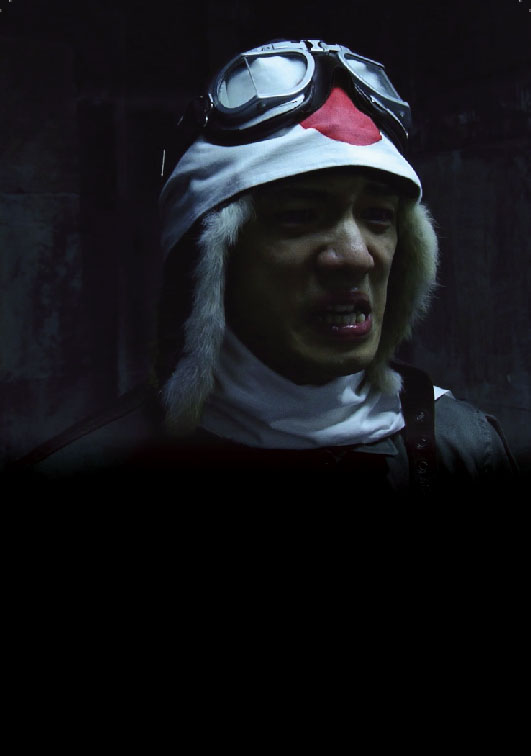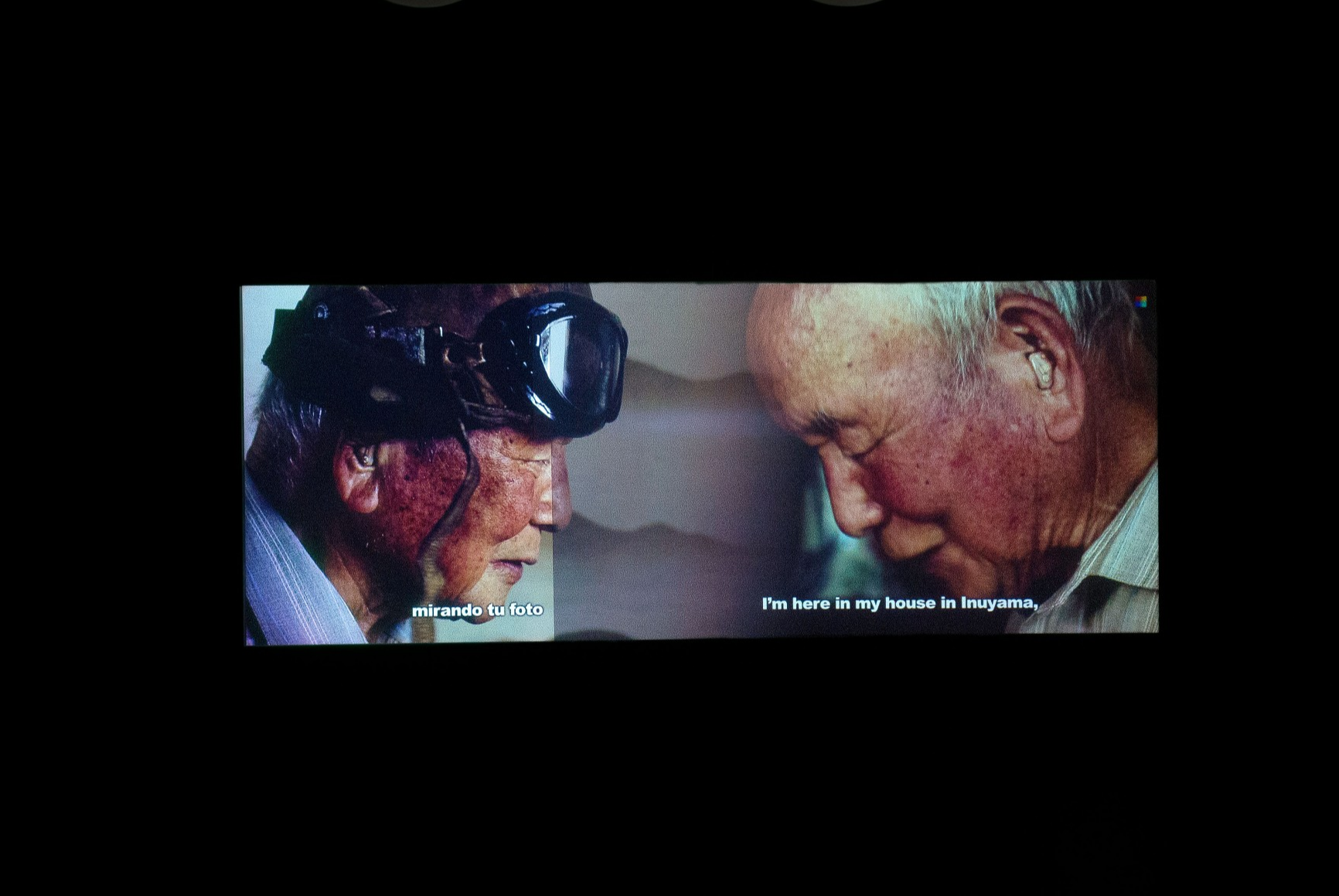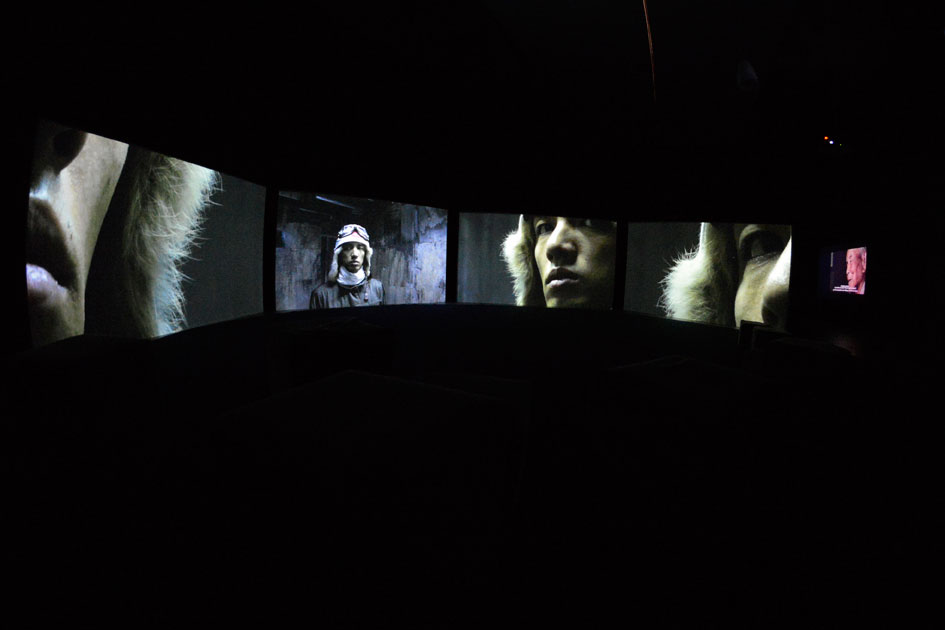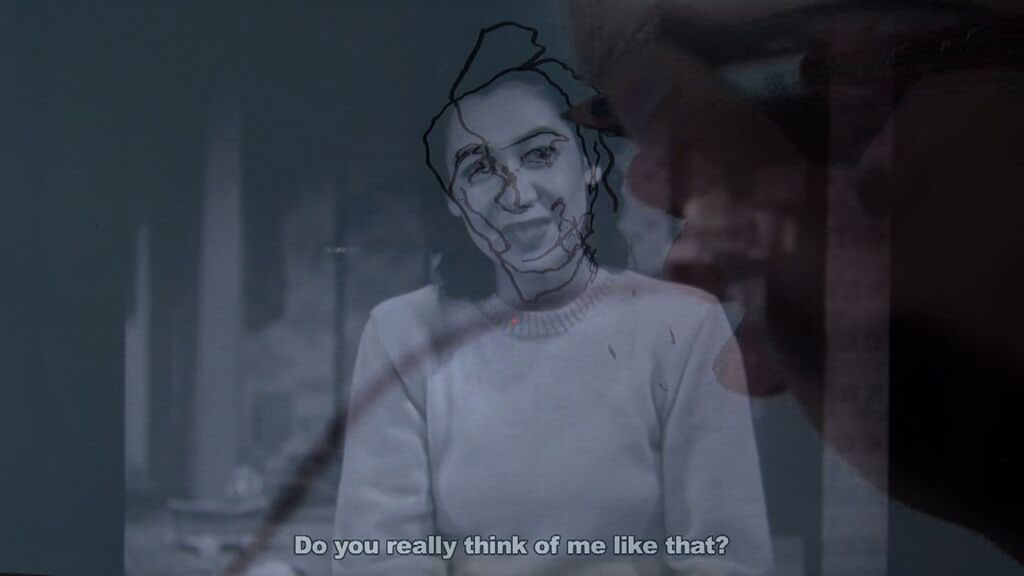Meiro Koizumi
The title of this show, Portrait of a Failed Silence [1] is a play on the titles of the two videos it comprises, but above all describes a type of mandate that permeates the work of Meiro Koizumi.

This Japanese artist has dedicated his practice to exploring and problematizing his culture, above all by staging the situations that tend to be silenced by its social conventions: the boundaries between the public and private sphere; extreme nationalism; conflict between duty and desire; survivor’s guilt; male sexuality; Japanese historical imaginary; machismo, and so on.
The videos presented at the MUAC are part of a series of works that focus on the phenomenon of the kamikaze pilots. This investigation into the relationship between violence and honor, and the passive-aggressive structures of the norms of social conduct in Japanese society is informed by a generational perspective. Koizumi belongs to a generation that did not experience war and in theory never will, since Article 9 of the Japanese Constitution contains a clause dating from 1947 that prohibits acts of war on the part of the state. With this clause, the state formally renounces war as a sovereign right and prohibits the resolution of international disputes through the use of force. The history of the Second World War is practically a taboo in Japan, and it is not taught in schools or spoken of socially, meaning that a whole generation is cut off from this traumatic event. Koizumi avails of two levels of distancing to investigate this repressed memory, one relating to time (generational) and one relating to space: having studied abroad and returned to work in Japan, he adopted a perspective that allowed him to ask questions of his country from the perspective of a semi-foreigner.

It is no coincidence that his initial question focused on the kamikaze, responding to a context of political crisis in the country that saw a shift to the right and a resurgence of nationalist sentiments that is clearly reflected in a proliferation of nostalgic films on the kamikaze.
Koizumi’s methodology in this series works on two levels: the first is an historical and documentary investigation that relies on raw materials such as letters or interviews with survivors of the war. This is followed by a secondary reflection through performance exercises, sometimes with actors and sometimes with the survivors themselves, recorded on video.

The content is based on historical documents but is always displaced to an affective plane. By the use of repetition the characters are led to an emotional moment of crisis that is almost cathartic, the result of precise management of time on the basis of rhythmic games in the dialogues that become choreographies to investigate the real emotional burden that is repressed by Japanese social and cultural conventions.

[1] Where Silence Fails (Double projection #1) (2013) and Portrait of a Young Kamikaze (2009).
Artist: Meiro Koizumi (Japan, 1976)
Curators: Cuauhtémoc Medina y Alejandra Labastida
Translation: Fionn Petch, Celorio Morayta, servicio especializado de idiomas
Publicación
Publication
Meiro Koizumi
Authors : Alejandra Labastida, Meiro Koizumi, Ayelet Zohar, Jessica Berlanga Taylor
Language : Spanish & English
Editor: MUAC-UNAM
Price: $190


